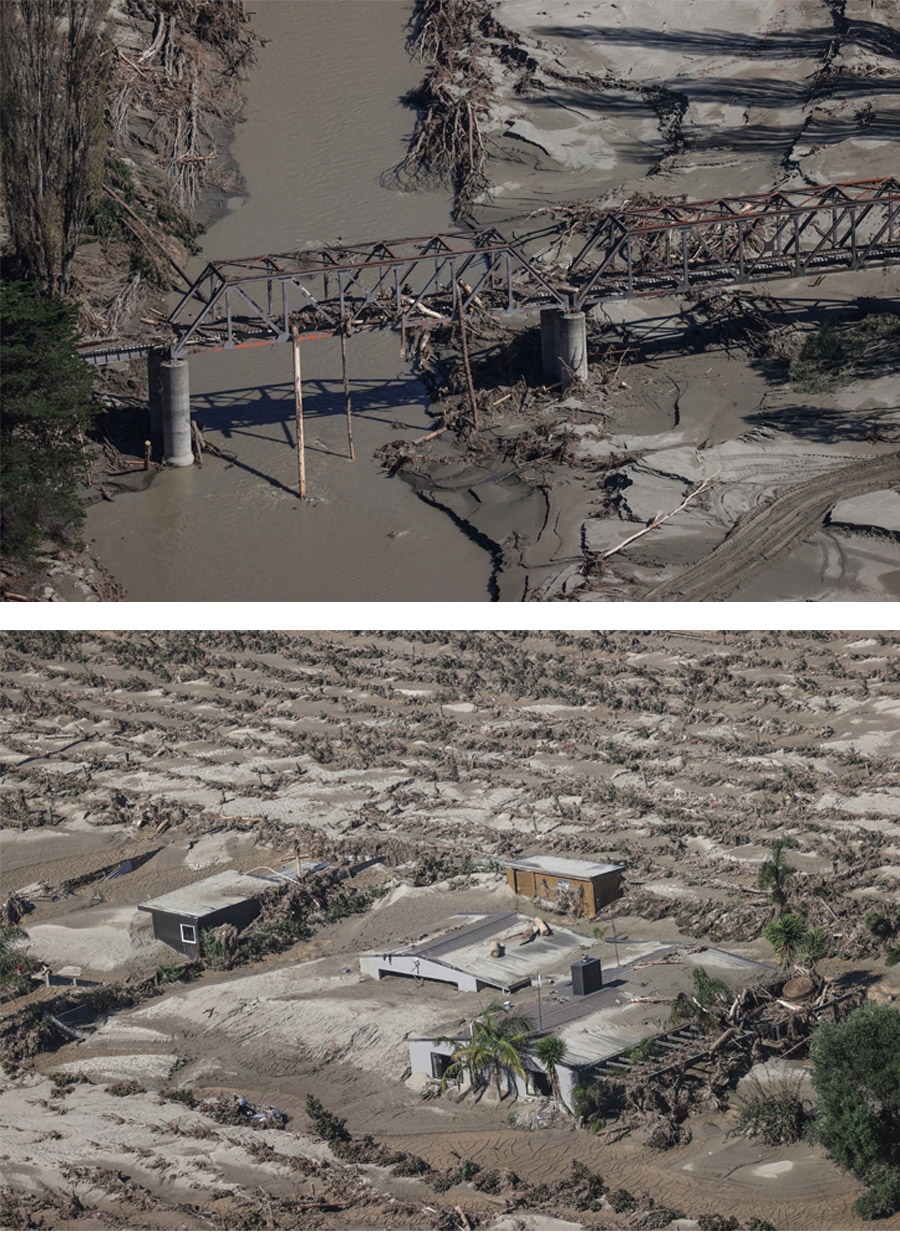New Zealand declared only its third-ever national state of emergency in February following Cyclone Gabrielle, which damaged property, infrastructure and crops across the North Island. The government estimated that economic losses from the event will be at least NZ$13.5 billion ($8.4 billion), second only to the 2011 Christchurch earthquake. According to PERILS AG, insurance claims currently stand at around NZ$2 billion (U.S.$1.3 billion).
Gabrielle formed as a tropical low off the coast of the Solomon Islands on February 5, before moving south across the Coral Sea and strengthening into a Category 3 tropical cyclone. As the storm approached New Zealand, it weakened and underwent extratropical transition, unleashing heavy rain and strong winds on the North Island for three days between February 12 and 14. Several meteorological stations in New Zealand saw record or near-record summer wind gusts, while storm surge levels peaked at 0.7m, according to the National Institute of Water and Atmospheric Research (NIWA). The most damaging feature of the storm was heavy rainfall, with NIWA reporting record or near-record totals across much of the North Island, particularly on the East Coast around Gisborne and Hawke’s Bay.
The rain landed on already saturated ground. The summer of 2022/2023 was the second wettest on NIWA’s records for the North Island, and only a few weeks earlier Cyclone Hale caused 1-in-200 year flooding in Auckland. As a result, the rivers responded swiftly to Gabrielle’s precipitation. New high-flow records were set, with many gauging stations judged to be in excess of a 1-in-500 year return periods[1]. On the River Esk, families reported having to climb out of the windows of their properties to await rescue on their roofs, with some estimating that water levels rose by 3 meters in just 10 minutes.
New Zealand’s landscape is steep and dynamic. The heavy rains caused many landslides, undermining or burying major roads including several state highways. The combination of landslides and high winds also cut power, water supplies, and communications. The outages were sustained for several days widely and weeks in some locations. Many of the telecommunication systems were exposed to single points of failure, which made incident management and recovery more difficult than it should have been.
Large woody debris from forestry operations, known locally as slash, contributed to the severity of the event by clogging rivers and destroying buildings and infrastructure (Figure 1). Historic forestry policy led to the replacement of native tree species with pine plantations on much of the eastern coast. Silt and slash from these plantations washed into the river system and accumulated around bridges. This led to the destruction of bridges and overtopping of defenses during Gabrielle. On the Tutaekuri River alone there were 5.3 km of breaches and 25.5km of weakened banks, according to Hawke’s Bay Regional Council. Along with rainfall intensity and amount, this helps to account for very rapid rates of rise of flood water.
Soil scientists estimate that the country has 5-10 years to change land use to protect soils on the forested slopes of the East Coast[2].

Source: Stuff, New Zealand
At the same time, New Zealand must find a way to deal with the growing socio-economic consequences of more frequent weather disasters. Insurance claims from atmospheric perils have increased over the last decade, affecting the availability and price of property insurance (Figure 2). The problem has been exacerbated by growing concerns around the effects of future climate change, which will not have been alleviated by a rapid attribution study that found Gabrielle’s rainfall was likely made 30% more intense due to human-induced warming[3].
Research into the socio-economic effects of climate change is increasingly finding that gradual physical changes may trigger large non-linear responses in socio-economic systems.
New Zealand must find a way to deal with the growing socio-economic consequences of more frequent weather disasters.
A recent study – funded by the New Zealand Ministry for Business Innovation and Employment – explored the effects of extreme weather on the property market in Hawke's Bay[4], which is one of the country's most desirable locations for coastal living. The researchers found that the local community is likely to accept the risk of financial loss and insurability in exchange for coastal living in the short (1-10 years) and medium (10-20 years) term. However, long-term (+20 years) economic losses from repeated storms and flooding will likely lead to an increase in insurance premiums and, eventually, collapse of the insurance market, putting downward pressure on property prices.
Overall, Gabrielle highlights that in a changing environment it is important to take a holistic approach to natural hazard risk management that considers not just climate change, but also other factors that can compound disasters such as forestry management and engineering design.
Steps are being taken to address these challenges. Prime Minister Chris Hipkins and The Insurance Council of New Zealand have called for the country to build back better to improve resilience[5], while NZ$6 billion has already been allocated to aid recovery efforts and improve resilience overall, especially of roads and telecommunications.
The National Adaptation Act and Natural Environment Act are also in draft, which contain provisions to reduce risks from natural hazards as a condition of rebuilding.
All statistics were correct at time of publishing.
| Title | File Type | File Size |
|---|---|---|
| Building back better following tropical cyclone Gabrielle | 5.5 MB |
…losses from repeated storms and flooding will likely lead to an increase in…premiums and, eventually, collapse of the insurance market.